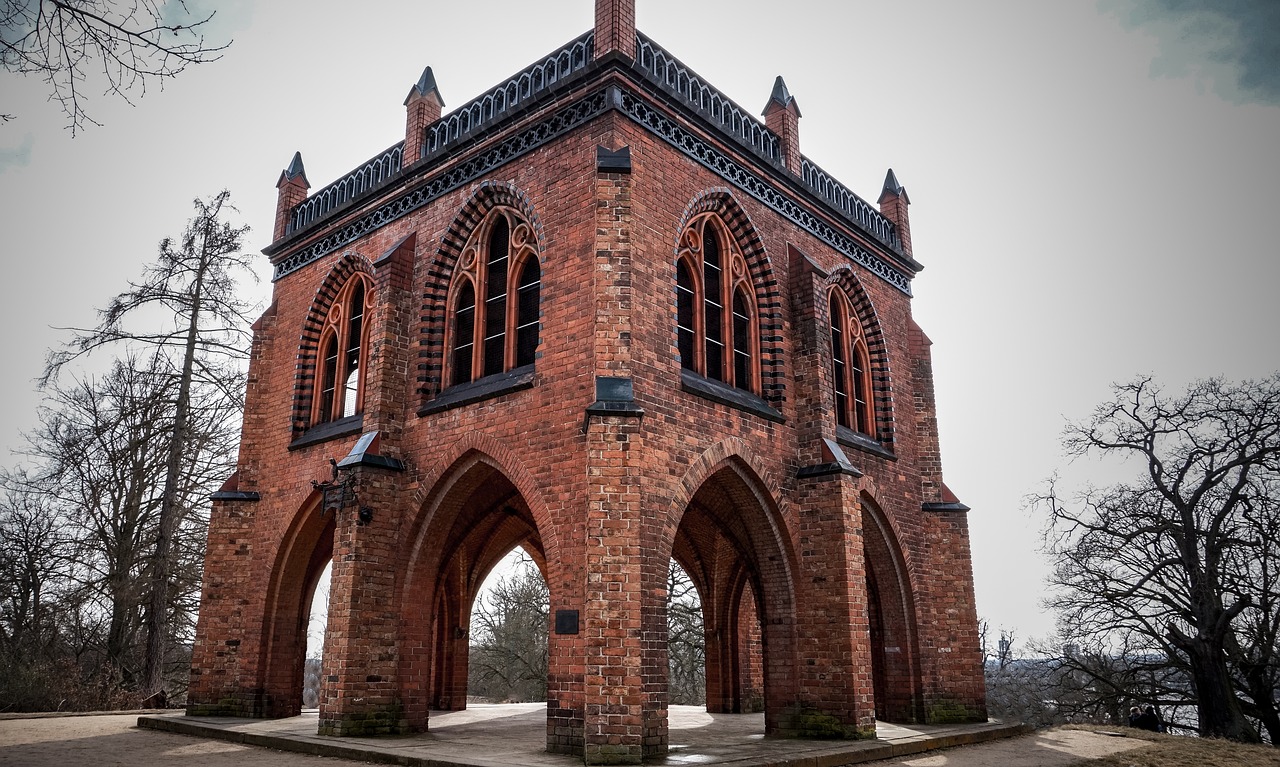The Veneration of Sacred Sites in Ancient Cultures
Sacred sites hold a revered place in the tapestry of ancient cultures, serving as focal points of spiritual devotion and cultural significance. These hallowed grounds were not merely physical locations but embodied the essence of belief systems and societal values of bygone eras. The veneration of sacred sites in ancient civilizations transcended mere physical structures, encompassing a deep-rooted connection to the divine and a profound respect for the mysteries of existence.

Definition of Sacred Sites
Sacred sites hold a special place in the hearts and minds of ancient cultures, serving as more than just physical locations. These sites are imbued with spiritual significance, cultural heritage, and historical importance, making them revered spaces that transcend the ordinary. In ancient civilizations, sacred sites were not merely physical structures but were believed to be portals to the divine, where the earthly and the spiritual realms intersected.

Architectural Significance
When delving into the architectural significance of sacred sites in ancient civilizations, we are transported back in time to witness the awe-inspiring structures that stand as testaments to the ingenuity and creativity of our ancestors. These sacred sites were not merely buildings; they were architectural marvels that reflected the beliefs, values, and aspirations of the societies that constructed them. From the towering pyramids of Egypt to the intricate temples of Greece, each structure was meticulously designed to serve both practical and symbolic purposes.
One of the most remarkable aspects of the architectural significance of sacred sites is the meticulous attention to detail and precision in construction. Ancient architects and builders displayed unparalleled craftsmanship, utilizing advanced engineering techniques to create structures that have withstood the test of time. The alignment of stones, the intricacy of carvings, and the grandeur of proportions all speak to the dedication and skill of those who envisioned and built these sacred sites.
Moreover, the architectural features of sacred sites often served a dual purpose, blending functionality with symbolism. For example, the layout of a temple might be designed to align with celestial bodies, emphasizing the connection between the earthly realm and the heavens. The use of specific materials, such as marble or gold, was not only for aesthetic purposes but also to convey the divine nature of the site and its significance in the spiritual realm.
Furthermore, the architectural design of sacred sites was often imbued with spiritual symbolism and meaning. Every column, arch, and sculpture carried layers of significance, representing cosmic principles, mythological narratives, and religious beliefs. The layout of the site itself could be a reflection of the sacred cosmology of the culture, with each element contributing to the overall harmony and balance of the architectural composition.
In conclusion, the architectural significance of sacred sites in ancient civilizations goes beyond mere construction; it encapsulates the essence of a culture's beliefs, values, and aspirations. These structures stand as timeless monuments to human creativity and spiritual devotion, inviting us to marvel at the ingenuity of our ancestors and contemplate the enduring legacy of sacred architecture.

Sacred Rituals and Ceremonies
Sacred rituals and ceremonies held at ancient sacred sites were intricate and meaningful practices that played a central role in the spiritual life of ancient civilizations. These rituals were not mere performances but rather deeply symbolic acts that connected worshippers to the divine realm and their cultural heritage. Through elaborate ceremonies, ancient peoples sought to honor their gods, ancestors, and the sacredness of the site itself.
At these sacred sites, rituals often involved offerings of food, drink, and valuable items as a sign of reverence and gratitude. Priests and priestesses, adorned in elaborate ceremonial attire, would lead the ceremonies, chanting prayers and performing sacred dances to invoke blessings and protection. The atmosphere would be filled with incense, music, and the sounds of chanting, creating a mystical ambiance that transported participants to a higher spiritual plane.
One of the central aspects of these rituals was the act of purification and cleansing, both physically and spiritually. Participants would undergo rituals of purification, such as bathing in sacred waters or burning sacred herbs, to cleanse themselves of impurities and prepare to commune with the divine. These acts of purification were believed to purify the soul and create a sacred space for the gods to descend and bless the worshippers.
The timing of these rituals was often closely tied to celestial events, such as solstices, equinoxes, and other significant astronomical occurrences. Ancient cultures believed that aligning their ceremonies with these celestial events would amplify the spiritual power of the rituals and strengthen their connection to the divine forces governing the universe.
Through these sacred rituals and ceremonies, ancient cultures sought not only to honor their deities but also to strengthen the bonds of community and reinforce their cultural identity. The shared experience of participating in these rituals created a sense of unity and belonging among worshippers, fostering a deep sense of connection to their ancestors and the spiritual traditions passed down through generations.

Mythological Connections
Mythological Connections in ancient cultures hold a profound significance, intertwining legends and beliefs with the sacred sites that dot the landscapes of history. These sites were not merely physical locations but served as portals to mythical realms, where gods and heroes walked among mortals, shaping the very fabric of existence. The stories woven around these sites were not just tales but reflections of the cultural ethos and spiritual beliefs of ancient civilizations. Through intricate myths and folklore, these sacred sites became imbued with a sense of mystique and reverence, drawing pilgrims and worshippers seeking divine connection.

Historical Evolution
Topics related to the significance and practices surrounding sacred sites in ancient civilizations, exploring their cultural, religious, and historical importance in various societies.
Exploring the concept of sacred sites and their role in ancient cultures as places of spiritual significance and cultural heritage.
Examining the architectural features and design elements of sacred sites in ancient civilizations, showcasing the craftsmanship and engineering skills of the time.
Detailing the religious practices and ceremonies conducted at sacred sites, shedding light on the spiritual beliefs and traditions of ancient cultures.
Investigating the mythological stories and beliefs associated with sacred sites, highlighting the narratives that shaped the cultural identity of ancient civilizations.
Tracing the historical evolution of sacred sites from their origins to their development in various ancient cultures, illustrating their enduring legacy.
Exploring the artistic depictions and symbolism found in sacred sites, revealing the creative expressions and cultural meanings embedded in ancient artworks.
Discussing the practice of pilgrimage to sacred sites and the expressions of devotion shown by ancient worshippers, reflecting the spiritual significance of these locations.
Highlighting contemporary conservation initiatives aimed at protecting and preserving the sacred sites of ancient cultures for future generations.

Artistic Representations
Artistic representations in sacred sites hold a profound significance in ancient cultures, serving as visual manifestations of spiritual beliefs and cultural values. The intricate carvings, paintings, and sculptures found in these sites not only showcase the artistic prowess of ancient civilizations but also convey symbolic meanings that enrich the religious experience for worshippers.
One of the remarkable aspects of artistic representations in sacred sites is the use of symbolism to communicate complex ideas and narratives. For example, the hieroglyphics adorning the walls of Egyptian temples not only depict historical events but also convey religious teachings and mythological stories in a visual language that transcends time.
Furthermore, the placement of artworks within sacred sites is carefully considered to enhance the spiritual atmosphere and create a sense of awe and reverence among visitors. Statues of deities, intricate mosaics, and ornate frescoes serve not only as decorative elements but as conduits for connecting worshippers to the divine realm.
Moreover, the artistic representations in sacred sites often reflect the cultural identity and values of the ancient societies that created them. From the majestic statues of Greek gods in temples to the intricate mandalas in Buddhist stupas, each artwork is a reflection of the beliefs and practices that shaped the spiritual landscape of the time.
In conclusion, the artistic representations in sacred sites play a crucial role in preserving the cultural heritage and spiritual legacy of ancient civilizations. Through these masterful creations, we can glimpse into the rich tapestry of beliefs and traditions that have shaped human history and continue to inspire awe and wonder in the modern world.

Pilgrimage and Devotion
When it comes to the concept of pilgrimage and devotion in ancient cultures, one cannot overlook the profound significance these practices held for worshippers. Pilgrimage, the journey made by individuals to reach a sacred site, was not merely a physical travel but a spiritual quest filled with devotion and reverence. Ancient civilizations across the globe engaged in pilgrimage to honor their deities, seek blessings, and connect with the divine presence believed to reside at these sacred locations.
Imagine a scene where throngs of believers embark on arduous journeys, traversing rugged terrains and enduring hardships, all driven by unwavering faith and devotion. The act of pilgrimage was not just a ritual but a transformative experience that deepened one's spiritual connection and strengthened their beliefs. It was a testament to the enduring power of faith and the lengths people were willing to go to express their devotion to their gods.
At these sacred sites, worshippers engaged in various acts of devotion, from offering prayers and sacrifices to performing elaborate ceremonies to honor the divine. The atmosphere buzzed with fervor and piety, as devotees sought to communicate with the spiritual realm and seek blessings for their lives. The rituals performed were not mere gestures but profound expressions of faith and reverence, binding the worshippers in a shared spiritual experience.
Moreover, pilgrimage was not just a personal journey but a communal endeavor that brought together people from diverse backgrounds and regions. It fostered a sense of unity and shared purpose among believers, transcending individual differences and forging a collective bond based on shared faith and devotion. The sacred sites served as focal points of spiritual convergence, where worshippers from far and wide gathered to partake in the sacred rituals and experience the divine presence.
Through the practice of pilgrimage and devotion, ancient cultures not only honored their deities but also reaffirmed their cultural identity and heritage. These sacred sites were not just physical locations but living embodiments of the beliefs, traditions, and values that defined a civilization. They were repositories of history and spirituality, where the past intertwined with the present, creating a timeless tapestry of faith and devotion.

Modern-Day Preservation Efforts
Modern-Day Preservation Efforts focus on the crucial initiatives undertaken to safeguard and maintain the sacred sites of ancient cultures in the present day. These efforts encompass a range of conservation practices aimed at ensuring the longevity and integrity of these culturally significant locations. One prominent approach involves the implementation of advanced technology, such as 3D scanning and digital mapping, to document and monitor the structural condition of sacred sites. By utilizing cutting-edge tools, experts can assess the preservation needs of these sites with precision and develop targeted conservation strategies.
Furthermore, collaborative efforts between archaeologists, conservationists, and local communities play a vital role in the preservation of sacred sites. Through partnerships and community engagement programs, awareness is raised about the historical and cultural value of these sites, fostering a sense of collective responsibility for their protection. Educational initiatives, including workshops and seminars, are also key components of modern preservation efforts, aiming to impart knowledge about the significance of sacred sites and promote sustainable conservation practices.
In addition to technological advancements and community involvement, legislative measures are instrumental in safeguarding sacred sites from threats such as urban development and environmental degradation. Governments and heritage organizations worldwide are enacting laws and regulations to designate these sites as protected areas, ensuring legal protection against encroachment and destruction. By establishing legal frameworks for the preservation of sacred sites, authorities can enforce strict guidelines for their conservation and prevent unauthorized activities that may compromise their integrity.
Moreover, the promotion of sustainable tourism practices is another essential aspect of modern preservation efforts for sacred sites. By encouraging responsible visitation and implementing visitor management strategies, authorities aim to minimize the impact of tourism on these fragile locations while generating revenue for their maintenance. Sustainable tourism initiatives not only support the upkeep of sacred sites but also foster appreciation for their cultural significance among visitors, contributing to their long-term preservation.
Frequently Asked Questions
- What are sacred sites?
Sacred sites are locations that hold spiritual significance and cultural importance in ancient civilizations. These places were often used for religious ceremonies, rituals, and other sacred practices.
- Why were sacred sites built with architectural significance?
Sacred sites were constructed with intricate architectural designs to symbolize the spiritual beliefs and cultural values of the ancient societies. The craftsmanship and engineering skills showcased in these structures reflected the reverence and devotion of the worshippers.
- What role did mythological connections play in sacred sites?
Mythological stories and beliefs associated with sacred sites played a crucial role in shaping the cultural identity of ancient civilizations. These narratives added depth and meaning to the spiritual practices and rituals conducted at these locations.
- How have modern-day preservation efforts impacted sacred sites?
Contemporary conservation initiatives have helped protect and preserve sacred sites of ancient cultures, ensuring that these historical landmarks are safeguarded for future generations to appreciate and learn from. These efforts contribute to the ongoing legacy of these sacred locations.



















